For her debut feature film Sumbisori, writer and director Lee Eun-jung uses the unique culture and community of Korea’s famed Haenyeo, to explore the strained relationship between a daughter, Hae-jin (Lee Sun-bin), and her mother Ok-ran (Seo Young-hee), whose disappointments in life affects their expectations of each other.
In Korean, the word ‘sumbisori 숨비소리’ translates to “breath sounds”, but on the island of Jeju – Korea’s largest island in the peninsula, located off its southern coast – sumbisori has a much more specific meaning. Amongst the Haenyeo, it refers to ‘Breath of the Sea’, the calm, steady exhale in the form of a uniquely pitched whistle the female divers make upon surfacing from a deep dive.
This breath serves two distinct purposes: first, the steady exhale is to carefully release the bubbles that build up in the lungs and bloodstream due to the increased external pressure of the ocean’s depths on the body. When diving, it’s imperative that swimmers rise to the surface carefully to avoid a potentially fatal condition known as Decompression Sickness, or ‘the bends’. The second reason for the whistle is for the women to communicate with each other to make sure they’re all ok. Haenyeo always dive in pairs or groups to ensure their safety because they never take their decades of expertise or the unpredictability and potential dangers of the ocean for granted.
This buddy system plays a significant part in Lee’s depiction of the film’s female relationships, because it’s this trust and reliance the Haenyeo exhibit towards each other, and their acceptance of Hae-jin that encourages her to open up about her struggles living in Seoul.
Bearing the unwieldy burden of her mother’s expectations to pass the laborious government exams needed to obtain the coveted position of a civil service worker, Hae-jin stumbles, and eventually loses her way in the bustling metropolitan city. Not only has she failed the test, but she’s been scammed out of her money, and left isolated having lost touch with all her friends back on the island.
So, Hae-jin does what anyone would do when they feel the pressure of failure building and crashing down on them. They escape. She runs to where there aren’t any giant highrises and glass enclosed skyscrapers rising above her, and social expectations to fit in and conform to manufactured ideals forcing its will on her. On Jeju, the air is crisp, the lands lush with farms, open plains, and the ocean vast and limitless. And it’s there in its depths, Ok-ran, Hae-jin’s grandmother Kang-ja (Kim Ja-young), and her aunts, or as they’re affectionately known amongst the Hanyeo, Samchon, meaning Uncle, finds acceptance for being who she is. Mess and failures and all. Lee’s (Toxic, The Uncanny Counter) portrayal of a young woman afraid to disappoint her mother, while already feeling the overwhelming disappointment in herself of her life not turning out to be all she imagined, is relatable.
The insecurity and guilt she feels in almost every interaction with Ok-ran is visible in every hesitant move she makes, which is subtly juxtaposed with the sheer sense of relief and relaxation evident in Lee’s body language when in the water surrounded by Kang-ja and the Haenyeo. Hae-jin’s gradual steps to confidence as she learns to forgive herself demonstrates how closely the actress and director worked to develop their character over the course of the film.
Despite diving for years side-by-side with her own mother, Ok-ran still seems uneasy about the life she’s been living. Though she may be away from the pressures of city life, she still thinks about where Hae-jin needs to be to have a successful life. Or her idea of success anyway. Depicting Ok-ran’s discontent with her own life this way is a very interesting narrative choice that Lee makes because it shows that even though women can in fact be living life on their own terms, they can still feel some semblance of pressure to be the women society tells them to be. Seo (Toxic,Way Back Love) plays this complexity of female identity with great depth and angst. Not angst in an overwrought fashion, but angst that would be familiar to any woman who feels that there’s something missing in their life, something they’re searching for but can’t quite identify.
To balance out these heavier character elements, is Kang-ja whose exuberance of being able to experience the magic of the ocean is practically contagious, as this is what Hae-jin grasps onto. Though she receives the earth shattering news that her bouts of confusion and forgetfulness are attributed to dementia, Kang-ja is determined not to let the diagnosis and disease steal her joy for life away. The Haenyeo all band together to support Kang-ja in whatever form she needs. They sing their songs of the ocean and camaraderie reminding Ok-ran that she’s not alone, and encourage Hae-jin to take her time rising through her troubles.
Though Sumbisori may be her first feature, Lee shows that that she has a profound understanding of how to use film as a medium to show how many layers they are to the human experience, and how there’s so much more to the Haenyeo as women, divers, and a culture that’s as unique as each breath the take and exhale.
In my interview with Lee Eun-jung, we spoke of her finding inspiration as a writer and solace on Jeju Island, the challenges of filming in open water, and how daughters can be inspiring for their mothers, and discovering her various narrative metaphors in the most unlikely places like names and even an adorable Jindo dog name Haekyung.
Sumbisori premiered in the Korean Competition program of the 2025 Jeonju International Film Festival.
Note: This interview was conducted via email with the use of a language translation program and has been edited for clarity and length.
Your previous film work includes being an assistant director, and script writer. Can you speak a bit about your entrance to the film industry, and forming your own script writing process and narrative style?
Becoming a film director has been a long-time dream of mine. When I was young, I read stories about the people behind the camera in a film magazine, and I vaguely admired their lives. That’s why I chose to major in Theater and Film at university, and right after graduating, I was lucky enough to get a chance to work on a commercial film set.
Working on set was tough, but I think I became addicted to the energy you can only feel there. The process of many people coming together to create one work was moving, and that energy kept me working as an assistant in film productions.
I wouldn’t say I have much experience yet in what you’d call a ‘narrative style.’ But I do try to keep a promise to myself to write regularly and stick to a set schedule. I’ve realized that, like any office worker, you need to faithfully sit at your desk and spend time writing if you want to finish something in the end.
And I tend to get inspiration from everyday life while taking a walk, in the shower, or riding the subway. I jot down sudden ideas in a notepad and later weave them into my scripts.
Sumbisori opens with the camera in the perspective of a Haenyeo ascending to the surface, and as soon as they surface, we see Ok-ran joyfully calling to Kang-ja, who rises across from her, and Kang-ja calls out to Ok-ran in return.
I found this brief interaction, and the others like it in the film, to reveal something very deep about the relationship between the mother and daughter. It shows how they’re always at the forefront of each other’s minds and who they look to every time when they surface from the depths of what troubles them.
The work of a Haenyeo includes looking after the fellow divers you go out to the sea with. As you mentioned, Ok-ran and Kang-ja have been protecting each other their whole lives.
Later, when Kang-ja leaves, and Hae-jin takes her place, it carries that same meaning as well.
Can you describe your feelings when you wrote this opening scene then saw the actresses perform it for the first time?
We filmed in the actual ocean, and the waves of Jeju’s ocean were quite rough at the time. So we went into filming with a lot of anxiety. It was difficult to stand still in the water, and the actors had to act as well, so it was quite difficult. I was thankful, sorry, and respectful to see the actors safely perform their roles.
There’s a very distinct difference in how Hae-jin is introduced into the story and Ok-ran’s reception of her, in comparison to how we previously saw Ok-ran in the sea. Hae-jin looks weary and apprehensive as she walks towards her family home, and upon seeing Hae-jin, Ok-ran is obviously not pleased to see her daughter. Instead of a warm welcome, Ok-ran’s first inclination is to ask “Did you pass?”,referring to Hae-jin having taken a civil service exam.
To the audience this tells us that this mother and daughter pair have a somewhat distant relationship. For any child having their parents greet them this way when they already feel lost and alone would be discouraging, and I saw it as commentary on the personal and cultural expectations parents have of gaining status through education and passing exams.
That’s right. Passing the civil service exam in Seoul and living a stable life wasn’t Hae-jin’s dream — it was Ok-ran’s hope. Like all parents, she just wanted her child to succeed. But often, those hopes end up becoming a burden for the child.
I wanted to portray that kind of relationship in the scene where Ok-ran, seeing Hae-jin after a long time, asks “Did you pass?” Hae-jin had no choice but to return home because she had nowhere else to go, but knowing how her mother would feel about it, she came back filled with inner conflict.
In truth, children understand their parents’ hearts better than anyone.
Usually in South Korean films and dramas it’s the sons who are shown as being weighed down with passing the civil service exams and securing a position as a government worker, so I appreciate you showing that women also face these expectations and struggles. Was this part of your motivation in creating the story and Hae-in as a character?
It’s true that many stories in films and dramas focus on men, even though in Korea, a lot of women apply for civil service exams, and their success rate is also quite high.
Separate from that, though, I wanted to tell a story I know best. And I wanted to fill the film with the things I love.
I hoped to capture the concerns of young people living in today’s world — to say that it’s okay even if you don’t live in a big city like Seoul, and it’s okay even if you don’t have a stable, guaranteed job like a civil servant.
I’d like us to talk a bit about the assumptions people have about ‘city life’, like living in a large city like Seoul is better than living in the country, or islands like Jejudo.
Everyone that Hae-jin meets assumes that her life in Seoul must’ve been easier, more prosperous, and fulfilling than what they live in Jejudo, and much of this is because capitalist societies and those where class hierarchies are firmly established, have created a culture where ‘city life’ equates to success. But rarely are the emotional, financial, mental, and even health challenges that arise in relation to the stress of the struggle to achieve this assumed ideal, acknowledged.
Ok-ran herself lived in Seoul for a time with her husband and Hae-jin, but she too eventually ran back home to Jejudo to heal after her marriage ended, leaving Hae-jin in the city alone. Despite knowing how difficult city life can be, Ok-ran still expecting Hae-jin to make it there without any emotional support seems especially unfair, but I think this shows that perhaps she still had feelings of guilt for leaving her daughter to in a sense makeup for Ok-ran’s own perceived failures of not ‘making it’ in the big city.
That’s right. As the dialogue in the latter part of the film suggests, Ok-ran was pushing her daughter to achieve what she herself couldn’t. Jeju women have long been known for their independence and strong self-reliance. It’s a tendency rooted in the island’s wartime history, and Ok-ran lived that kind of life, so she probably believed Hae-jin could do the same.
When Hae-jin was younger, she likely thought that was the only path to success, which is why she followed her mother’s wishes and lived in Seoul. But after experiencing it firsthand, she realized that life in Seoul didn’t suit her. It was only after returning to Jeju that she truly understood this about herself.
That’s what gave her the courage to try living her life in Jeju. I wanted to reflect on what real ‘success’ means. Isn’t true success about finding something that truly makes you happy, not by other people’s standards, but by your own values? That was the conclusion I reached. We live in a time where money matters, but I don’t think it should be the number one thing.
There’s the scene with Hae-jin and her childhood friend Ga-on where it’s referenced that none of Ga-on’s friends in Seoul made it to her wedding because they, including Hae-jin, were all too busy. And I wondered what good is a city life if working and being there causes you to discard friendships and miss moments that matter to them?
This is my personal experience. I was always busy with filming while working as a film assistant. My friends understood my life to some extent, but I never thought of myself as such a fool in my 20s, forgetting even my best friend’s wedding. But like Ga-on, my friends also understood and supported me. I felt really sorry and grateful to my friends.
In your first answer, you said that your writing process involves being consistent, getting inspiration from everything you see, and writing down whatever comes to your mind . When did you first get the inspiration for Sumbisori , and how did the script develop?
Did you ever stay on Jeju island for a period of time to fully immerse yourself in the Haenyeo culture?
Jeju island is one of the most famous tourist destinations in Korea, and I visited it for the first time when I was 30. Before that, I had traveled to many places like Europe and Southeast Asia, but when I finally went to Jeju, I completely fell in love with it. Since then, I’ve spent a lot of time there.
Whenever I was going through something difficult, I would go and walk along the Olle Trail, and it was during those times that I first encountered the Haenyeo. I think that experience is what first made me think of the act of Sumbisori itself. The sound of Haenyeo breathing. Later, while developing a script about a mother and daughter, I decided to incorporate Haenyeo culture into the story, eventually expanding it into a tale of three generations of women.
Jeju is still my favorite place, and although I can’t visit as often as I used to, I make a point of going there at least once a year to stay for a few days.
Now, I’d like to discuss the film’s themes of memory, feeling lost, losing connections with our present, and finding our way back home, and how the ocean and the act of sumbisori serves as metaphors for these.
The ocean is an overwhelming place and dangerous to be in if we enter it without the proper survival skills and sense of respect for it. Its vastness mirrors the human’s brain’s capacity to create memories, and learn, but with cognitive ailments like dementia and alzheimers, our ability to navigate our memories and do what’s as natural as breathing to us, becomes more difficult as the disease progresses.
To me, the confusion, emotional upheaval and distress caused are mirrored in the panic that can arise when we lose our way in the ocean’s dark depths.
I thought the way you explored all of these complex emotions the characters feel about their own experiences, and Kang-ja’s dementia diagnosis and the disease’s progression, were very poignantly and carefully done.
Please speak about any research you did on cognitive decline, how you figured out ways to weave it into the story using the ocean as a metaphor, and working with actress Kim Ja-young to portray its effects on Kang-ja.
After the dementia diagnosis, I did set up a few scenes to show the progression of the illness, but I tried not to portray it too heavily. I was very conscious of not wanting it to look fake.
My own grandmother has dementia, and through that, I learned that the symptoms don’t appear constantly — they surface unexpectedly in ordinary moments. I felt that even those brief moments could be enough to convey the seriousness of the condition.
At the same time, I wanted the character Kang-ja to remain consistently cheerful. As the leader of the Haenyeo, I hoped she would come across as warmhearted and charismatic. So, I thought her attitude toward dementia should also reflect her character. That’s why actress Kim Ja-young and I talked a lot about how to portray Kang-ja as playful and lovable. Although she would have been aware of her own declining condition, she probably didn’t want to burden her children or her fellow Haenyeo by letting them know. She likely felt that causing them worry would be something to feel sorry for.
Because Kang-ja serves as the emotional anchor for both Ok-ran and Hae-jin, I thought it was very fitting you named her Kang-ja, as it translated to ‘Strong man’. But with the dementia slowly erasing her memories and ability to be in a sense emotionally present in their lives, it showed how fragile she was, too.
I thought the name Kang-ja, which means “strong man” in Korean, was a perfect fit for her because she serves as the emotional anchor for Ok-ran and Hae-jin . However, as her dementia gradually erases her memories and she becomes emotionally unable to be present in their lives, it also reveals how fragile she really is .
I could tell from your interpretation that you have a deep understanding of the Korean language. Thank you for recognizing the meaning behind the name. In the past, due to the traditional preference for sons, it was common for names to include the character ‘Ja’ (子, meaning ‘son’). But in this community, I gave her the name ‘Kang-ja,’ hoping she would be the strongest person of them all.
I believe the reason Kang-ja is strong is because, even as her body deteriorates from dementia, she holds onto her lifelong devotion and love for the sea with unshaken conviction.
When she says, “I want to die in the sea,” it reminded me of how some terminal patients refuse life-prolonging treatment in a hospital and instead choose to spend their final moments in the home where they’ve lived their entire lives. In the same way, Kang-ja chose the sea. She didn’t want to give up the life she loved so deeply until the very end. That’s why I think she truly lives up to her name — Kang-ja, a strong person.
I grew up on Barbados, an Island in the Caribbean, and the sea has always been my favorite place to be. It’s where I went on Sundays to swim and snorkel, but also where I went to escape what troubled me. Swimming and snorkeling or diving requires complete focus on our bodies and surroundings, there’s no real time to think about things that seem distracting in the moment.
As you swim further from shore and look back, you have a different perspective of how everything, including our problems look on land.
I think this is what makes Haenyeo such amazing women. Their ability to let everything go and focus on what’s right in front of them, and realize that the life they’re living can be as satisfying as they want it to be, and this is what drew Hae-jin to follow in their path. But what I thought was interesting is that it took Ok-ran seeing Hae-jin fully embracing the challenges required to be a Haenyeo, and the camaraderie and lifestyle of the Samchons, for Ok-ran herself to finally realize the life she’s been living for years was good enough.
Can you speak about crafting these particular developments in Hae-jin and Ok-ran’s character arcs, and why it was important for you to depict the daughter as an inspiration for her mother and your experience working with actresses Lee Sun-bin and Seo Young-hee?
First of all, your personal story sounds so beautiful. I felt truly glad because many of my own experiences by the sea are reflected in this film as well. I believe Haenyeo represents the purest form of labor, and in those simple moments of focusing entirely on one thing, there’s something valuable for us living in the modern world to learn.
Even within a family living under the same roof, the way people view the same matter differs depending on their own circumstances and positions. Ok-ran and Hae-jin also see the world of Haenyeo differently. Ok-ran, though a top Haenyeo, was never proud of her job, while Hae-jin, having watched her mother since childhood, thought it was the coolest profession anyone could have. That difference naturally created character conflict and tension, and it was also the driving force behind the story.
I personally found the process where Ok-ran comes to realize things through her losses and through Hae-jin to be beautiful as well. Someone once said, Sumbisori is a story that starts with Hae-jin and ends with Ok-ran, and I can agree with that because of the changes Ok-ran goes through.
Actors Lee Sun-bin and Seo Young-hee had previously played sisters in the film Toxic (2022), so I did worry whether portraying a mother-daughter relationship might feel awkward. But both of them have such broad acting ranges that they overcame the real-life age gap and delivered convincing performances.
Since they already shared a good rapport, communication on set was smooth, and most importantly, as a first-time director, I was so grateful that they believed in me. Thanks to them, every day on set was a joy. I feel honored to have worked with such incredible actors for my debut project, and I hope I get the opportunity to collaborate with them again in the future.
For the technical side, please discuss the preparation process you, the production crew, and the cast went through to film a movie that has a significant amount of sequences in the sea and working with the experiences of the Haenyeo to accurately depict their world and culture.
Since I considered the sea to be another protagonist of the story, the underwater cinematography was one of the most important parts of ‘Sumbisori’. I wanted to vividly capture the sea of Jeju, which is both the home and the livelihood of the Haenyeo, so we shot 100 percent in the actual ocean.
While shooting in real conditions allowed us to maintain authenticity, there were risks like waves and weather, and since the actors themselves had to go into the water, a lot of preparation was required. Some of the crew and I personally took GoPros and went into the sea for underwater location scouting, searching for spots that would work best for us.
All the surface-level shots were performed by the actors themselves, while for some of the underwater scenes, stunt doubles assisted and among them were actual Haenyeo divers. The surface, underwater, and open-sea swimming scenes were all filmed in different spots around Jeju.
For her role as Hae-jin, actress Lee Sun-bin learned how to swim for the first time while preparing for ‘Sumbisori’. Thanks to her incredible mental strength and physical endurance, she mastered head-up swimming within just a month. Aside from Seo Young-hee, who was already comfortable in the water, both Lee Sun-bin and Kim Ja-young received diving training at the Hansupul Haenyeo School in Jeju.
Thanks to the practical help of Hansupul Haenyeo School and many Haenyeo divers, we were able to complete every single shot in Jeju’s real ocean. Every cut we filmed at sea felt so precious and valuable that I tried to use every one of them, and I believe the final film holds those moments beautifully within ‘Sumbisori’.
One of my favorite things about the film and how you showed the deep bond of sisterhood between the Haenyeo, is their singing. You show the Haenyeo have their own unique culture, with songs related to their diving, love and respect of the ocean, the land, and to each other. These scenes are special to me because they’re reminiscent of films centered around men where we’d see them going off to battle, sailing across the seas, or traversing the open plains like in old American westerns..
And in ‘Sumbisori’ we get to see women, mature women have these types of scenes where music is a method of showing camaraderie. Some of the songs have a bright, joyful energy, and some more melancholy, reflecting the emotional state of the characters. Talk to me about filming these scenes, and what they mean to you and the Haenyeo who worked on the film.
The song “Leodosana” appears twice, sung by the Haenyeo together. The first time is when Kang-ja, after being diagnosed with dementia, goes out to the sea for the first time and sits on the shore with the others, preparing to dive as they sing. “Leodosana” is a traditional folk song of the Jeju Haenyeo sung to encourage themselves and each other because their work is so harsh and grueling. With that heart, Kang-ja begins the song, and Haenyeo join in, as if to show they understand and share her feelings. Watching this, Ok-ran’s emotions become complicated.
The second time “Ieodosana” is heard is at the ending, led by the head of the Haenyeo, echoing from afar. This, too, is sung as a gesture of encouragement for one another. After saying goodbye to Kang-ja, the Haenyeo who remain sing for each other, for today, and to gather strength as they head back into the sea.
All the songs were recorded live by the actors themselves. Since real Haenyeo participated in the filming as actors, the scenes were filled with their spirit and energy, making everything feel that much more vivid and alive.
I’m curious about Haekyung (meaning coast guard). When did the idea of adding her to the story happen? I love dogs and when filmmakers add them as significant characters to a film’s story arc, and thought you using her as a sort of metaphor of being able to return home again to new beginnings after feeling emotionally lost, was great.
At first, Haekyung was conceived as an ‘ordinary’ dog you might find in many rural Korean homes. It was meant to add a certain charm that comes from the simple, endearing presence of a dog in the countryside. But during the script development phase, Yoon Seo-young, my co-producer, suggested an idea for using Haekyung in a more dramatic way. As we developed that idea, Haekyung came to symbolize ‘cycles’ and ‘returning.’
Looking back, I realize that over the years of developing this script, it wasn’t something I completed alone. It came together through the efforts of many people. The director bears the final responsibility, but it’s important to remember that this was never a journey taken alone.
This is my final question. I just have to ask, did the puppies in the film belong to the dog that played Haekyung? They were so cute!
I think dogs are truly harmless, gentle creatures. One of the moments that drew the biggest reactions from the audience at the Jeonju Film Festival was the scene with the newborn puppies.
There are three types of dogs that appear in Sumbisori: the adult dog Haekyung, the newborn puppies, and the slightly older pups. All of them are dogs from Jeju Island. Haekyung, the adult dog, was two years old at the time of filming, was extremely gentle and playful. The village where we shot the film is called Panpo in Jeju, and it was actually the producer who spotted Haekyung living there and cast her. Though she had no formal training as an animal actor, our crew stayed in Jeju throughout the shoot, taking walks with her and bonding with her, which led to such a wonderful performance.
As for the newborn puppies, they weren’t Haekyung’s actual pups. We asked around in Jeju for any dogs that were about to give birth and, after much searching, managed to find them. Because they were so young, we had to be extremely careful during filming and could only shoot for about 20 to 30 minutes.
The slightly older puppies that appear near the grave were cast with the help of a stray dog center in Jeju. Sadly, there are still many abandoned dogs in Jeju, and even now, countless puppies are waiting to meet new owners and homes.
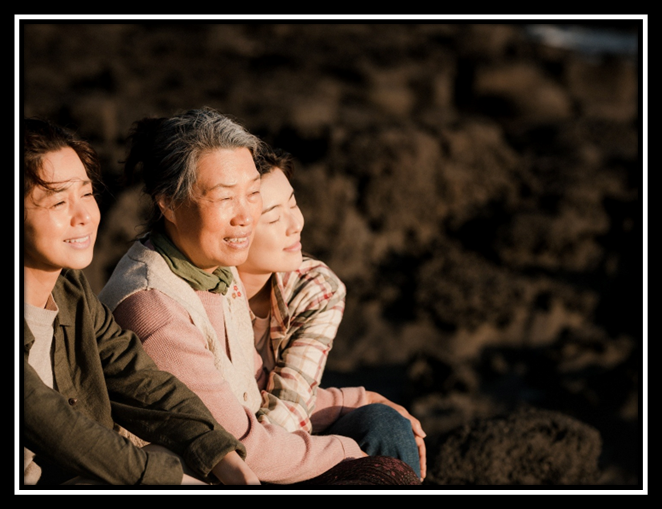
Carolyn Hinds
Freelance Film Critic, Journalist, Podcaster & YouTuber
African American Film Critics Association Member, Tomatometer-Approved Critic
Host & Producer Carolyn Talks…, and So Here’s What Happened! Podcast
Bylines at Authory.com/CarolynHinds
Twitter & Instagram: @CarrieCnh12
#JOENJUIFF2025 #kcrushinterviewwithLeeEunjung #Sumbisori #filmmakerLeeEunjung #kcrush #filmfestival #JeJu #kcrushamerica #kcrushmagazine #JeJuIslandKorea #koreanculture #Asianfilm #interview #dementia #memory #memoryloss #breathsounds #breathofthesea

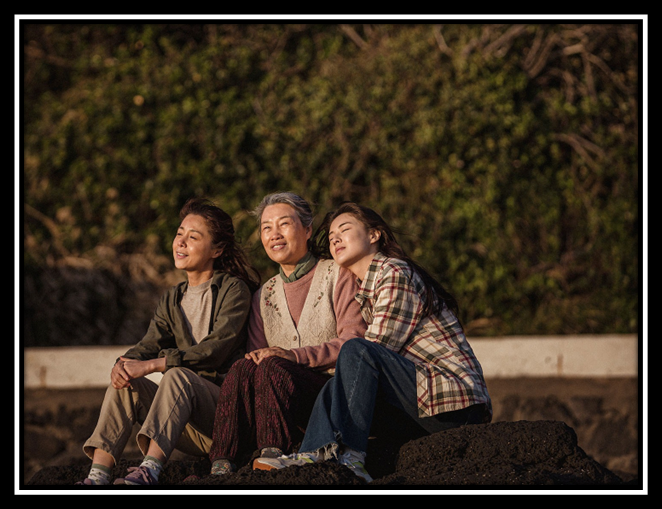
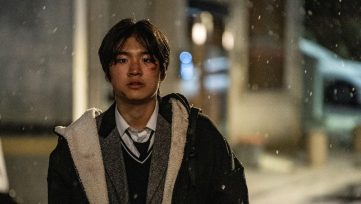
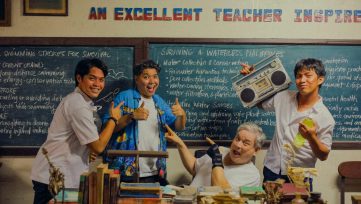
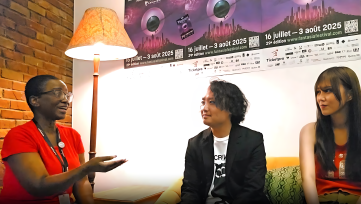
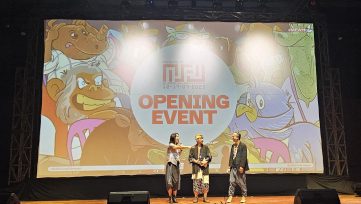
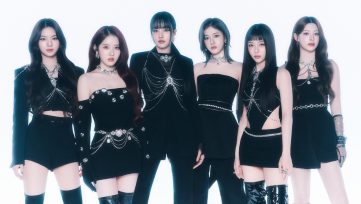

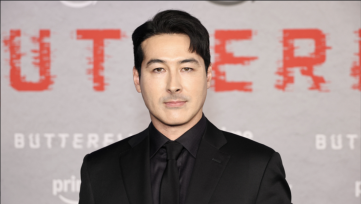
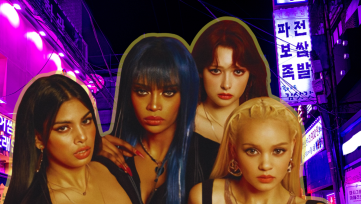


Leave a Reply